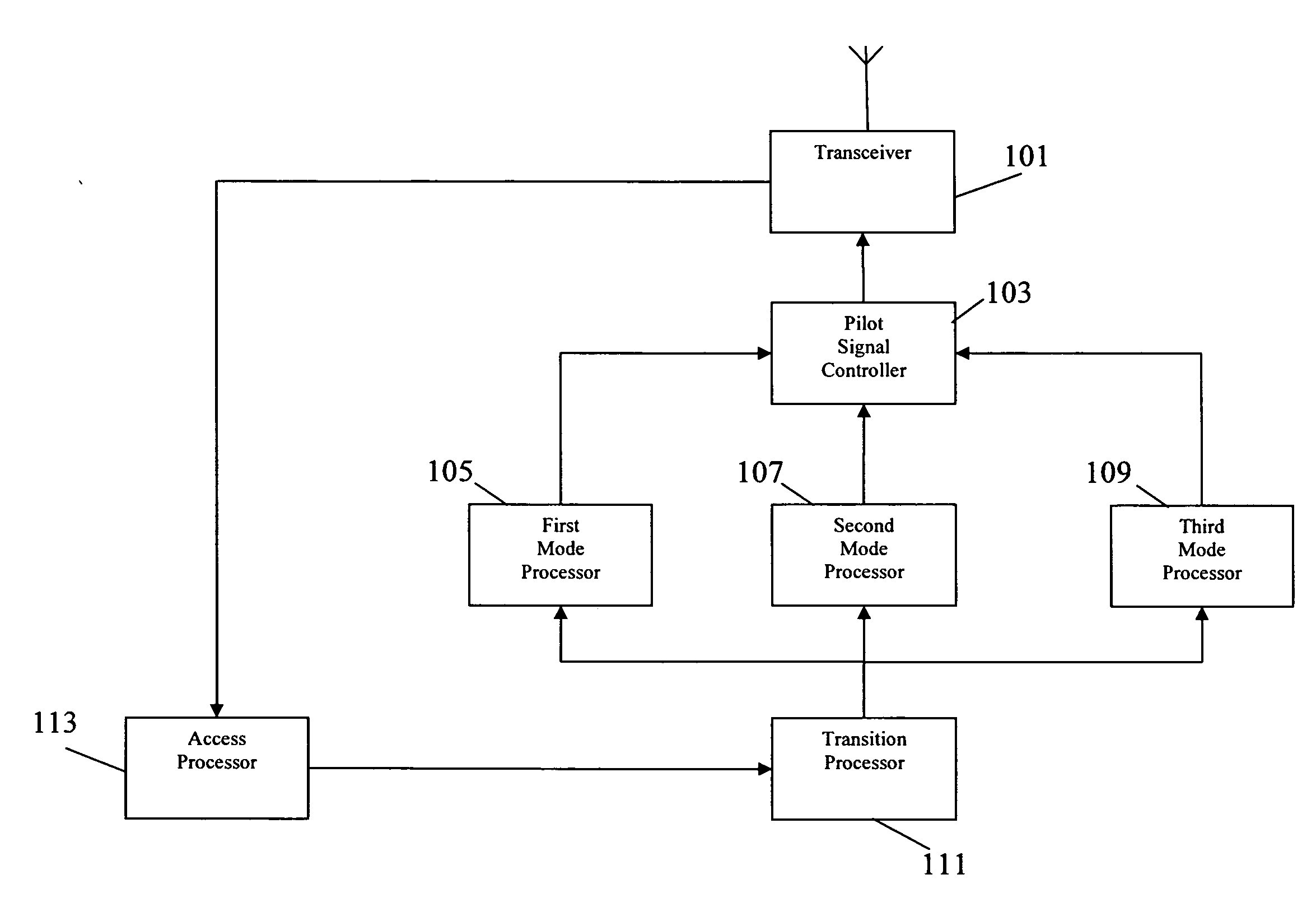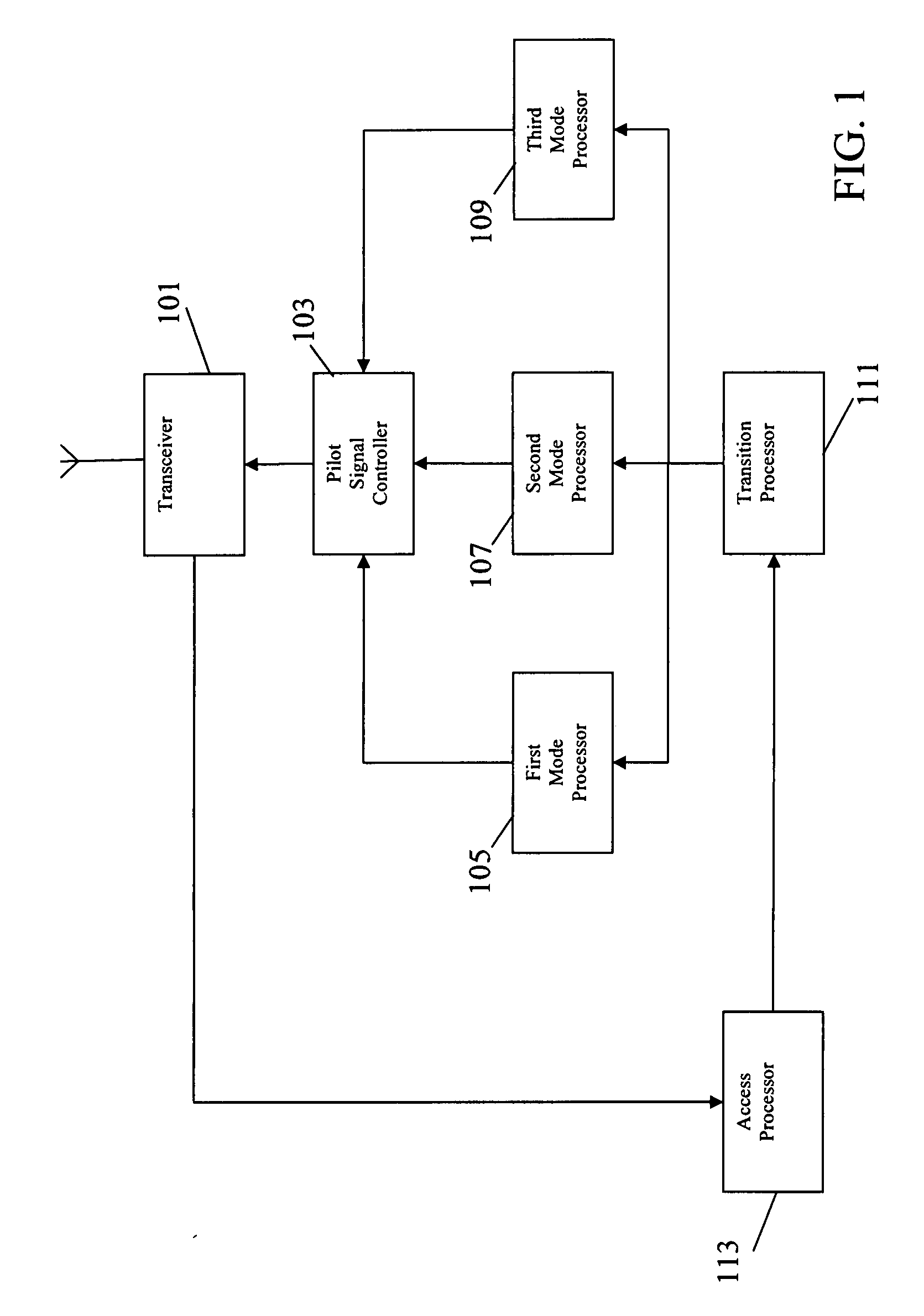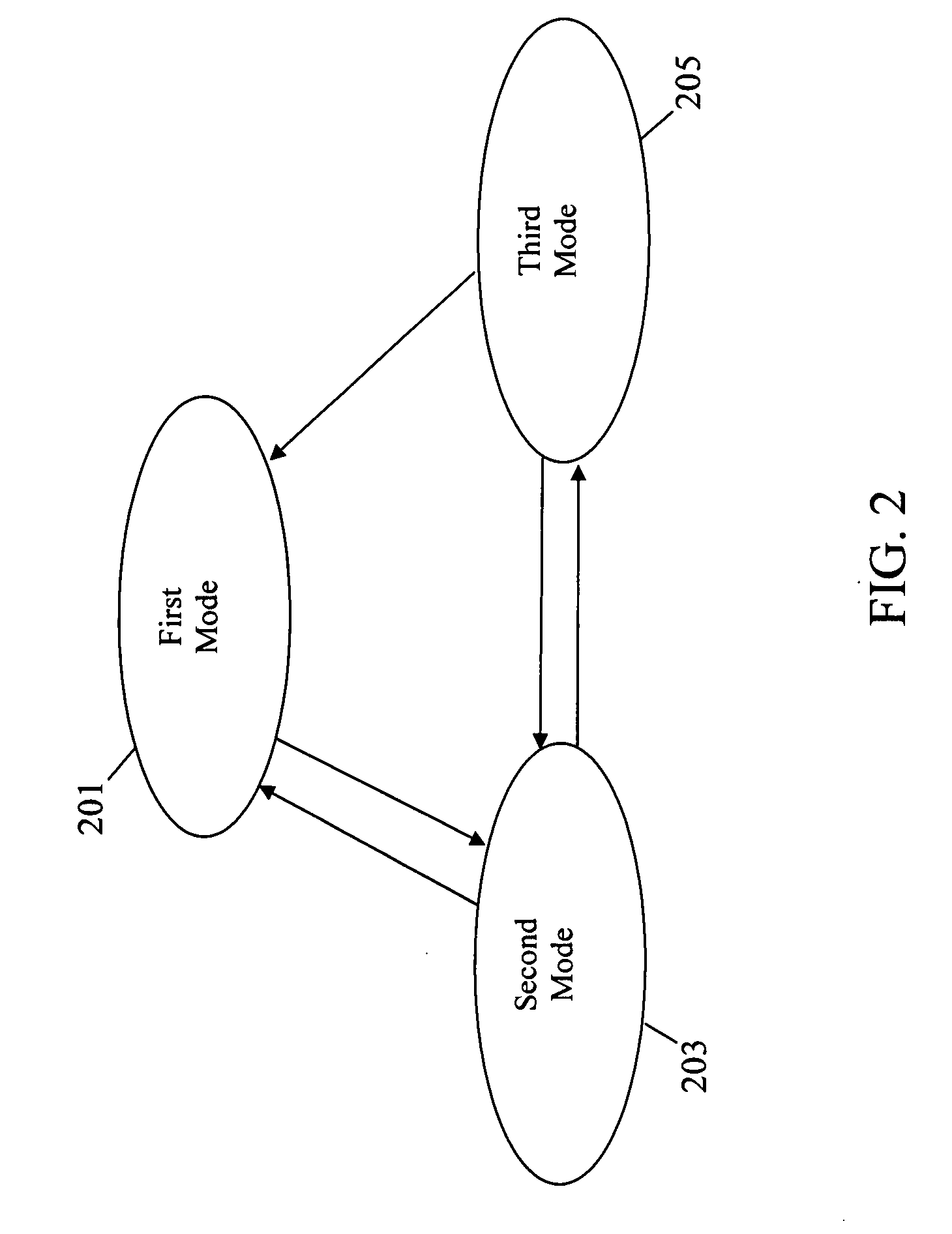Pilot signal transmission in a radio communication system
a radio communication system and pilot signal technology, applied in power management, sustainable buildings, high-level techniques, etc., can solve the problems of reducing the capacity of the system, generating a substantial degree of interference, and constant relative high level of interference, so as to improve the reliability, reduce interference, and improve performance
- Summary
- Abstract
- Description
- Claims
- Application Information
AI Technical Summary
Benefits of technology
Problems solved by technology
Method used
Image
Examples
Embodiment Construction
[0023]The following description focuses on embodiments of the invention applicable to an access point which is a base station of a 3rd generation cellular communication system such as UMTS. In the example, the access point is a pico-cell base station supporting one pico-cell out of a large number of pico-cells underlaying a macro cell. It will be appreciated that the invention is not limited to this application but may be applied to many other radio communication systems including for example a GSM cellular communication system or Wireless Local Area Network (WLAN).
[0024]In the specific scenario, an access point in the form of a UMTS pico-cell base station supports a very small cell of e.g. 10-50 m radius. The access point is one of many small base stations supporting similar sized pico-cells. For example, the access points may support individual flats or floors of a large block of flats.
[0025]FIG. 1 is an illustration of an access point in accordance with some embodiments of the in...
PUM
 Login to View More
Login to View More Abstract
Description
Claims
Application Information
 Login to View More
Login to View More - R&D
- Intellectual Property
- Life Sciences
- Materials
- Tech Scout
- Unparalleled Data Quality
- Higher Quality Content
- 60% Fewer Hallucinations
Browse by: Latest US Patents, China's latest patents, Technical Efficacy Thesaurus, Application Domain, Technology Topic, Popular Technical Reports.
© 2025 PatSnap. All rights reserved.Legal|Privacy policy|Modern Slavery Act Transparency Statement|Sitemap|About US| Contact US: help@patsnap.com



